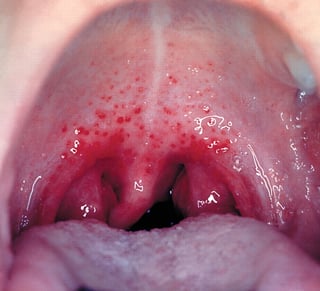Group A streptococcal infections are a number of infections with Streptococcus pyogenes, a group A streptococcus (GAS). S. pyogenes is a species of beta-hemolytic gram-positive bacteria that is responsible for a wide range of infections that are mostly common and fairly mild. If the bacteria enter the bloodstream an infection can become severe and life-threatening, and is called an invasive GAS (iGAS). Infection of GAS may spread through direct contact with mucus or sores on the skin. GAS infections can cause over 500,000 deaths per year. Despite the emergence of antibiotics as a treatment for group A streptococcus, cases of iGAS are an increasing problem, particularly on the continent of Africa. There are many other species of Streptococcus, including group B streptococcus Streptococcus agalactiae, and Streptococcus pneumoniae, which cause other types of infections. Several virulence factors contribute to the pathogenesis of GAS, such as M protein, hemolysins, and extracellular enzymes. From Wikipedia



